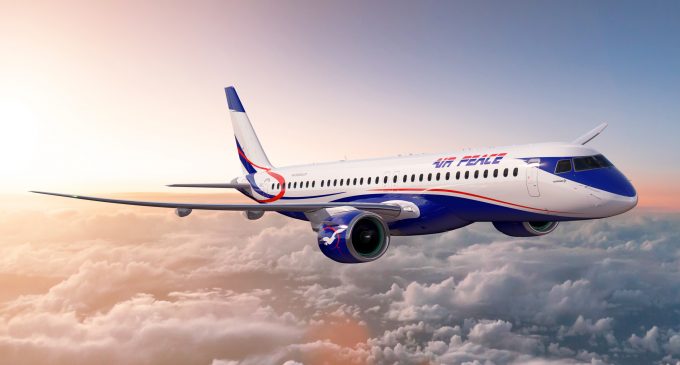
E195 E2 AIR PEACE FLYING 680x365 c
Narrow-body aircraft like the Embraer E195-E2, Embraer E-145, ATR aircraft series, De Havilland Dash8 among other smaller aircraft sizes are set to spearhead Nigeria’s airline industry recovery over the next decade as they adjust fleets and operate models for a squeezed travel market.
The serious impact of COVD-19 is forcing Nigerian airlines to re-strategize as “big” is no longer desirable to them. The era of “right-sizing” is coming. The country’s airlines have taken the decision to reduce their fleet size or change entirely their business model to smaller and more efficient airplanes.
Oliver Wyman’s Global Fleet MRO Forecast 2021-2031 said that by 2031, the global aviation fleet will be smaller than once projected because of the impact of COVID-19, and a decade of smaller fleets will mean constrained growth and consolidation.
To underscore the new idea, Nigeria’s biggest airline by fleet size, Air Peace took delivery of new Brazilian Embraer E195-E2 aircraft thus making the Nigerian carrier the first in African to acquire the aircraft. The carrier has 13 firm orders with another 17 purchase rights making a total of 30 Embraer planes being expected thus making the airline one of the largest customers for this aircraft.
A new airline, United Nigeria plans to begin domestic flight services during the first quarter of 2021 and decided to start with Embraer E-145 airplanes.
As the pandemic swept through the industry, many airlines were trying to sustain their daily operations as demand for passenger flights hit an all-time low from March, April, and July 2020 and even in the New Year. The situation has not significantly changed for the better up till now. While some carriers resorted to layoffs, operations’ down-scaling, and restructuring of their business, major passenger airlines explored a new service – cargo transportation on passenger aircraft.
As airlines rationalize their fleets as part of their survival strategies, an aviation expert who requested anonymity, told AirInsight that narrow-body and regional aircraft may become more important to their immediate recoveries. He disclosed that many airlines are walking a tight rope with the prediction that only two airlines in Nigeria may survive the effects of COVID-19, adding that Ibom Air has a great future with the type of aircraft they operate. While it uses the right size airplanes, virtually all other Nigerian carriers with 737 Classics and 737NGs could run into trouble.
According to the source, “The longest distance in Nigeria by air is one and half hours. In places like Europe, one and half hours distances are operated by trains, which is more economical. But, when you want to fly to such a distance in Europe, you use a turboprop aircraft. A CRJ900 aircraft takes the same minutes as a B737 in terms of speed and the fuel consumption is about 30 to 40 percent less than bigger airplanes. Leases on bigger and fuel-guzzling airplanes do not make sense any longer. The lease rental on these aircraft is expensive and the reason the lease is expensive is that many Nigerians have violated the Cape Town Convention agreement which Nigeria is a signatory by refusing to release airplanes to their owners through litigations that tend to paint Nigeria as a risky country to do business with”.
Chief Executive Officer of Ropeways Limited and a former Managing Director of Virgin Nigeria, Capt. Dapo Olumide, said airlines’ problems are self-inflicted with the use of the wrong type of aircraft for domestic operations. He predicted that by the end of this year, there is the likelihood that fewer Nigerian airlines would be in operation because of their overhead and associated costs.
Views: 1



